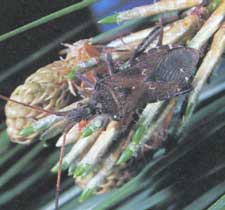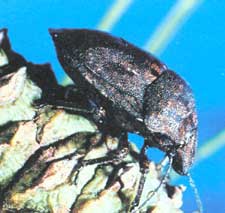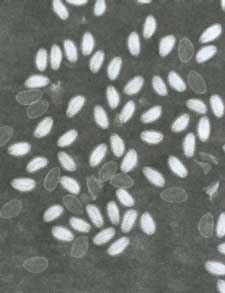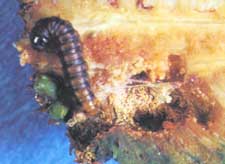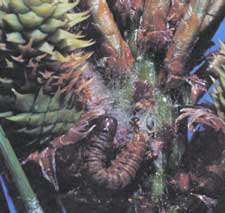Seed and Cone InsectsLarry R. Barber - Entomologist, Region 8, USDA Forest Service, Asheville, NC. Cordell C.E., Anderson R.L., Hoffard W.H., Landis T.D., Smith R.S. Jr., Toko H.V., 1989. Forest Nursery Pests. USDA Forest Service, Agriculture Handbook No. 680, 184 pp. Hosts All conifers grown in seed orchards are susceptible to seed and cone insects. The most damaging seed and cone insects are two seed-bugs (Leptoglossus corculus and Tetyra bipunctata) and five species of coneworms in the genus Dioryctria. Other insect species that cause seed losses include the slash pine flower thrips (Gnophothrips fuscus), pine seedworms (Cydia spp.), pine conelet looper ( Nepytia semiclusaria), cone borers (Eucosma spp.), cone beetles (Conophthorus spp.), and tip moths (Rhyacionia spp.). Distribution Seed and cone insects occur throughout the known range of the hosts, including over 13,000 acres of conifer seed orchards. Two-thirds of the total conifer seed orchard acreage in the United States is stocked with two major species of southern pines (loblolly and slash). Damage Cone and seed insects limit the production of seed for nursery stock. Insect damage varies greatly between seed orchards, depending on age, tree species, location, and orchard insect control plan. On occasion, orchards may lose their entire seed crop. Diagnosis Seedbugs (figs. 27-1, and 27-2) are sucking insects that feed on developing cones and seeds. Damage caused by these insects cannot be accurately diagnosed in the field; seed should be extracted from the cones and x rayed in the laboratory. The radiographs can then be used to distinguish viable seed. Filled seeds appear dark on the radiographs (fig. 27-3). Seedbug feeding also causes conelet abortion.
Biology Both species of seedbugs over-winter as adults. Leptoglossus corculus has several overlapping generations; Tetyra bipunctata has only a single generation per year. Of the two, L. corculus has more impact on seed production. Coneworms generally overwinter as larvae and infest flowers, buds, and cones or conelets during the growing season. The number of generations per year varies by species-from one in northern latitudes to as many as six in the South. Control Cultural - Store seed at the nursery in moisture-proof, airtight containers at subfreeezing temperatures (5 0F) to minimize potential insect-caused losses. Chemical - Seed and cone insects in seed orchards are controlled primarily by applying insecticides. There are five insecticides registered for use in southern pine seed orchards: esfenvalerate, azinphos -methyl, permethrin, acephate, and carbofuran. Most orchard managers apply an insecticide routinely throughout the growing season, rather than waiting for signs of damage. Selected References DeBarr, G.L.; Barber, L.R.; Maxwell, A.G. 1982. Use of carbofuran for control of eastern white pine cone and seed insects. Forest Ecology and Management 4: 1-18. Ebel. Bernard H.; Flavell, Thomas H.; Drake, Lloyd F. [and others]. 1980. Seed and cone insects of southern pines. Gen. Tech. Rep. SE-8. Asheville. NC: U.S. Department of Agriculture. Forest Service. Southeastern Forest Experiment Station and Southeastern Area, and State and Private Forestry. 43 p. Hedlin, Alan F.; Yates. Harry 0., III; Cibrian-Tovar. David [and others]. 1981. Cone and seed insects of North American conifers. Ottawa, ON: Canada Department 0f the Environment. Canadian Forestry Service: Washington, DC: U. S. Department of Agriculture. Forest Service: Chapingo. Mexico: Secretaria de Agricultura y Recursos Hidraulicos. 122 p. |
Forest Pests: Insects, Diseases & Other Damage Agents |

|
|
